National Atomic Testing Museum
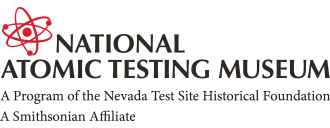
In October, 2006 I was in Las Vegas for the annual Macromedia conference, strike that, Adobe (I am still trying to get used to the acquisition...) developer conference. This would be the perfect chance to finally visit the Atomic Testing Museum. I had been trying to visit the museum since it had opened on February 20, 2005.
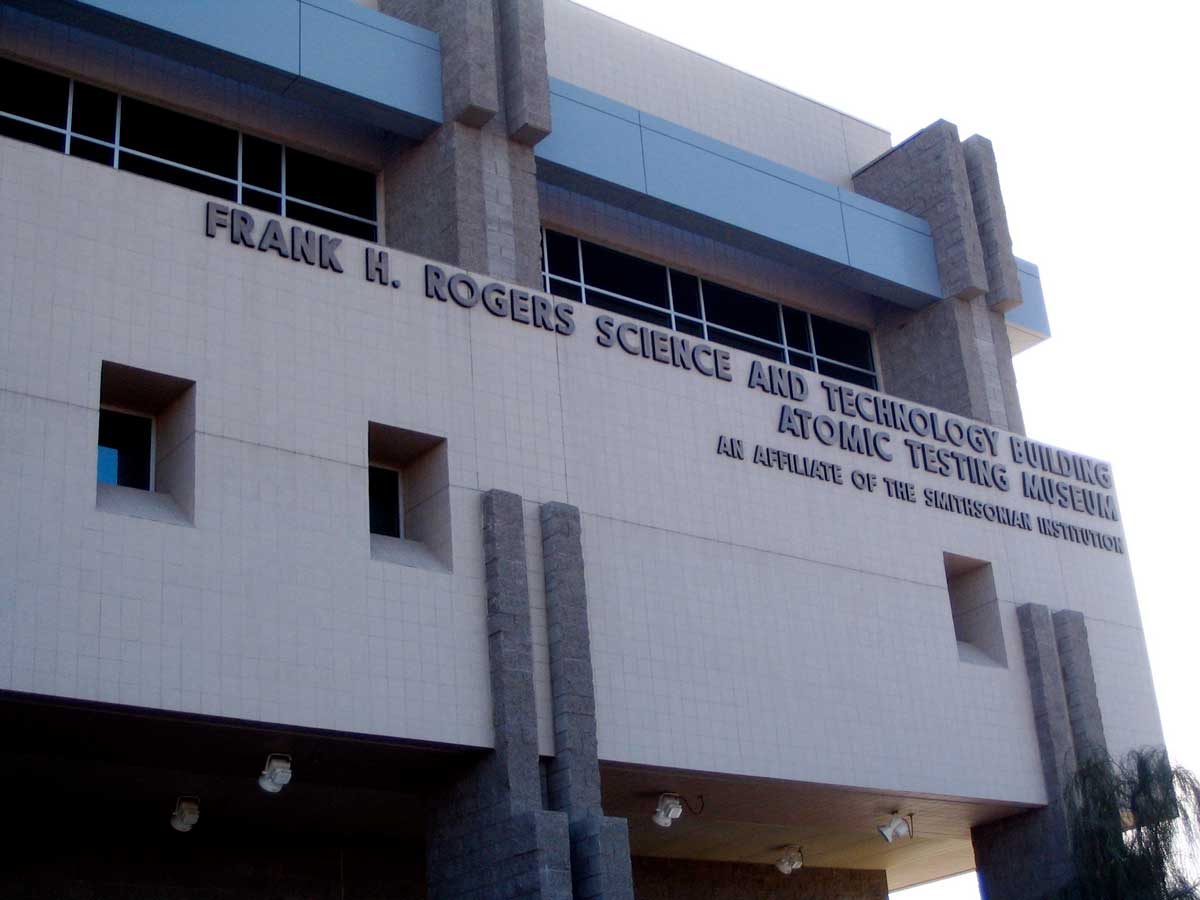
The museum, founded by the Nevada Test Site Historical Foundation and located on the Desert Research Institute campus, is an affiliate of the Smithsonian Institution and is located just east of the Las Vegas strip. The goal of the museum is to preserve and foster public accessibility to the history associated with the Nevada Test Site (NTS) and the Nation's nuclear weapons testing program.
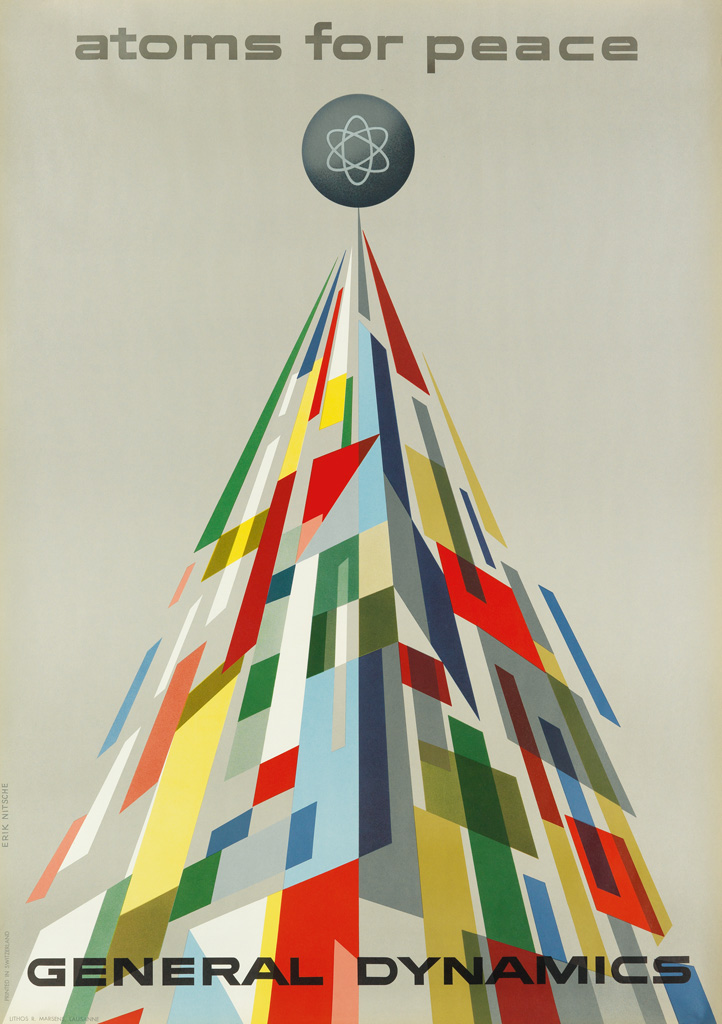
I met with Bill Johnson, the museum's current director, who gave me an insightful tour of the 8,000 square foot museum. Visitors are greeted with a replica of an NTS guard station as the museum's ticket office. Bill first took me into the Harry Reid exhibit hall. A collection of "The Atoms for Peace" artwork, created by Erik Nitsche in the 1950s and 1960s, is currently being showcased (it runs through January 21st 2007). As we strolled through the gallery, I asked Bill about the challenges in creating a museum on a topic as sensitive as nuclear weapons. He replied, "That is a real challenge for us. We try to place the exhibits in context and let them speak for themselves." In fact, the museum had four historians provide additional context for each of the posters, to aid in their place in history. We discussed the impact the Enola Gay controversy has had on the topic of nuclear weapons in general.
Bill pointed out that the museum has hosted a variety of speakers during its short existence, including survivors from Nagasaki. It is clear that Bill understands the issues that surround running a museum on this topic.
As we entered the museum, the first image that greeted us was of the Badger test. I commented to Bill that it was a nice choice since it was the same image I had used on our CD-ROM, Atomic Archive. A short video presentation, produced by Peter Kuran (of Trinity and Beyond: The Atomic Bomb Movie), tells the beginnings of the atomic age, and the race to develop the atomic bomb. The Atomic Age Gallery covers the 1940s through the 1960s. A copy of the letter from Albert Einstein to President Roosevelt is displayed, along with artifacts from the first nuclear test in the New Mexico desert. The story of the atomic bombings of Hiroshima and Nagasaki are told, but not in great detail.
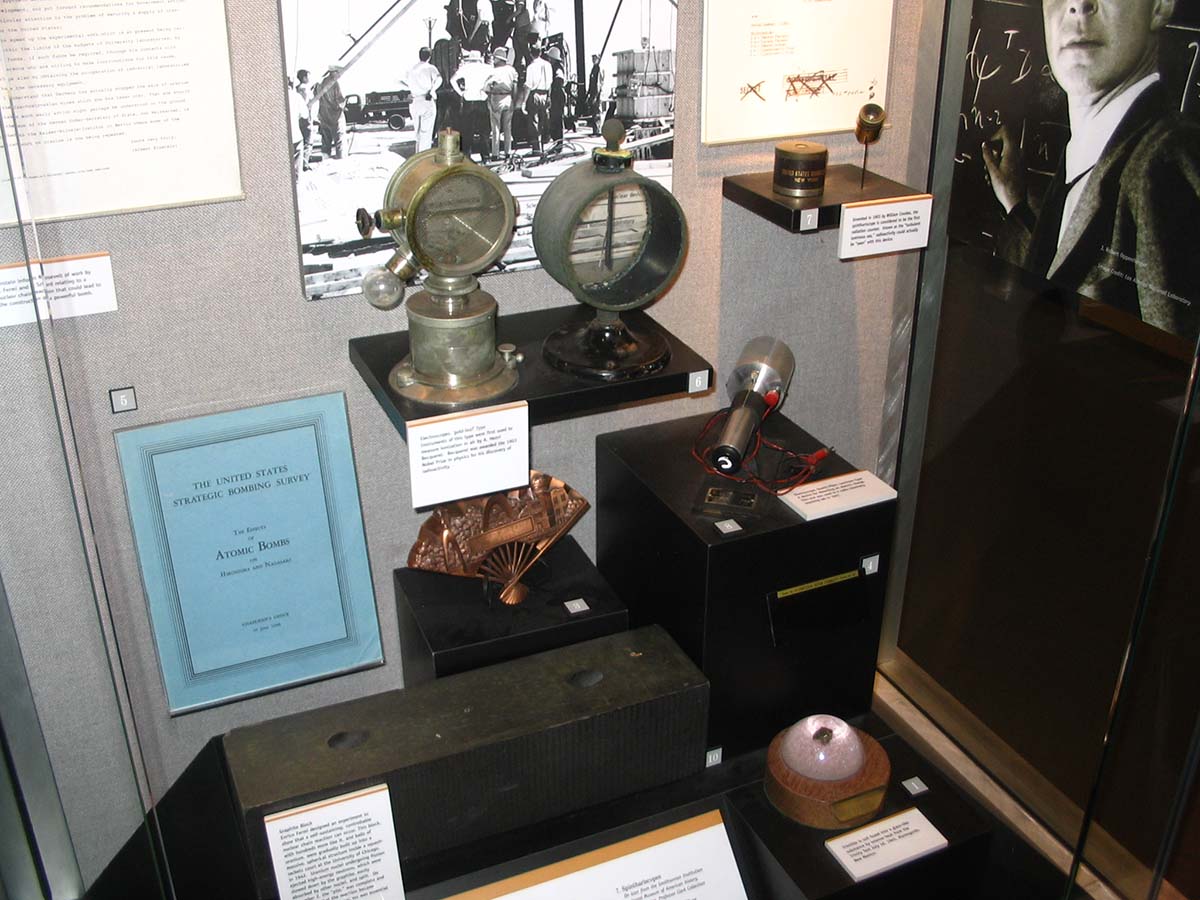
With the rise of the atomic age came the birth of atomic age pop culture. Atomic-themed comic books, candy, survival kits and other memorabilia capitalizing on the culture's fascination are displayed. The origins of these items range from other museums to Nevada residents to eBay.
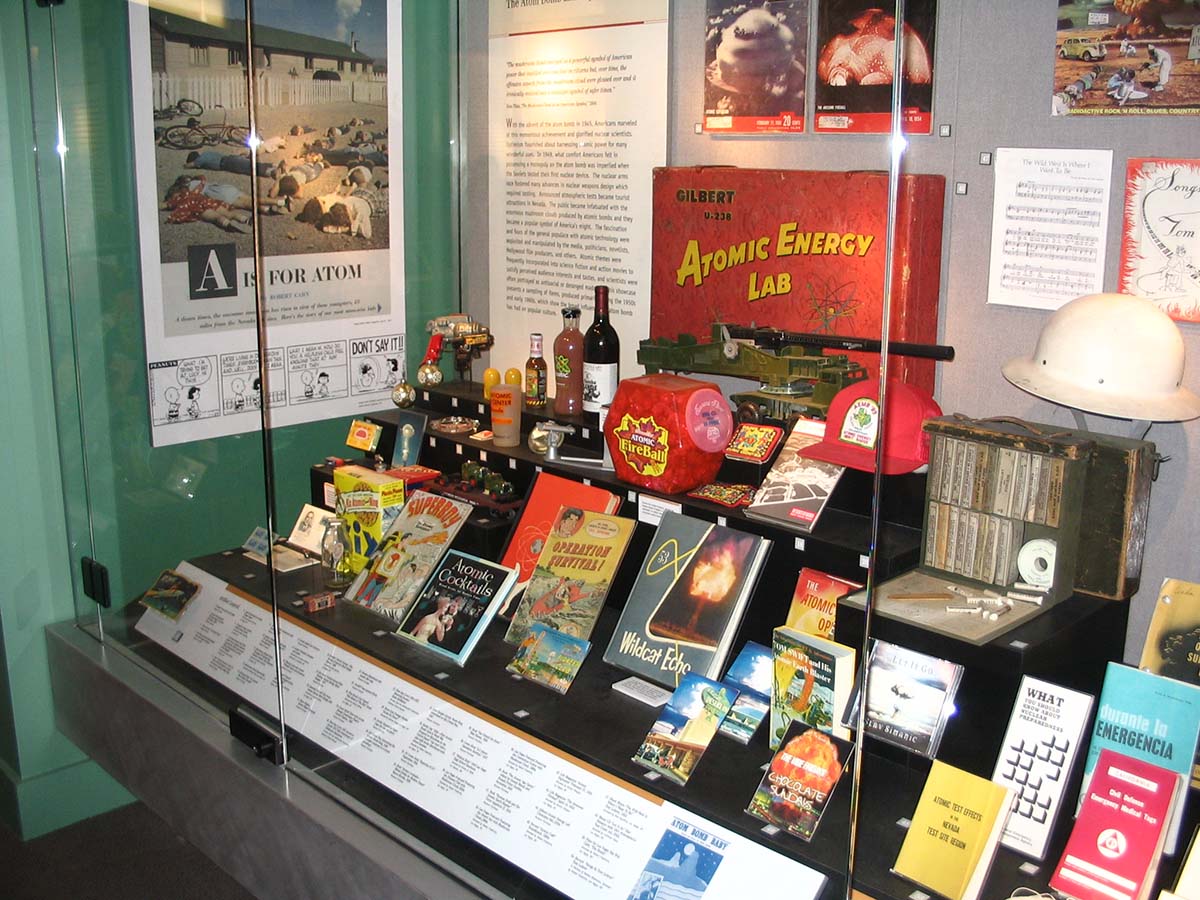
This being Las Vegas, the museum also chronicles how tourists sipped cocktails on casino rooftops, gazing at blast clouds on the horizon at the test site, 65 miles to the northwest. In fact, I was giving a technical talk on my work with the Nuclearpathways.org project, and was ending my presentation with a photo of casinos with a mushroom cloud in the distance.
One of the key attractions of the museum is called Ground Zero Theater. Built like a concrete bunker, this presentation recreates the experience of watching a nuclear test from 7 miles away. As bright light fills the screen, a few seconds later a blast of air simulates the shock wave and the wooden benches rumble. The rest of the presentation is an overview of the programs conducted at the Test Site, including interviews with scholars and people who worked there.
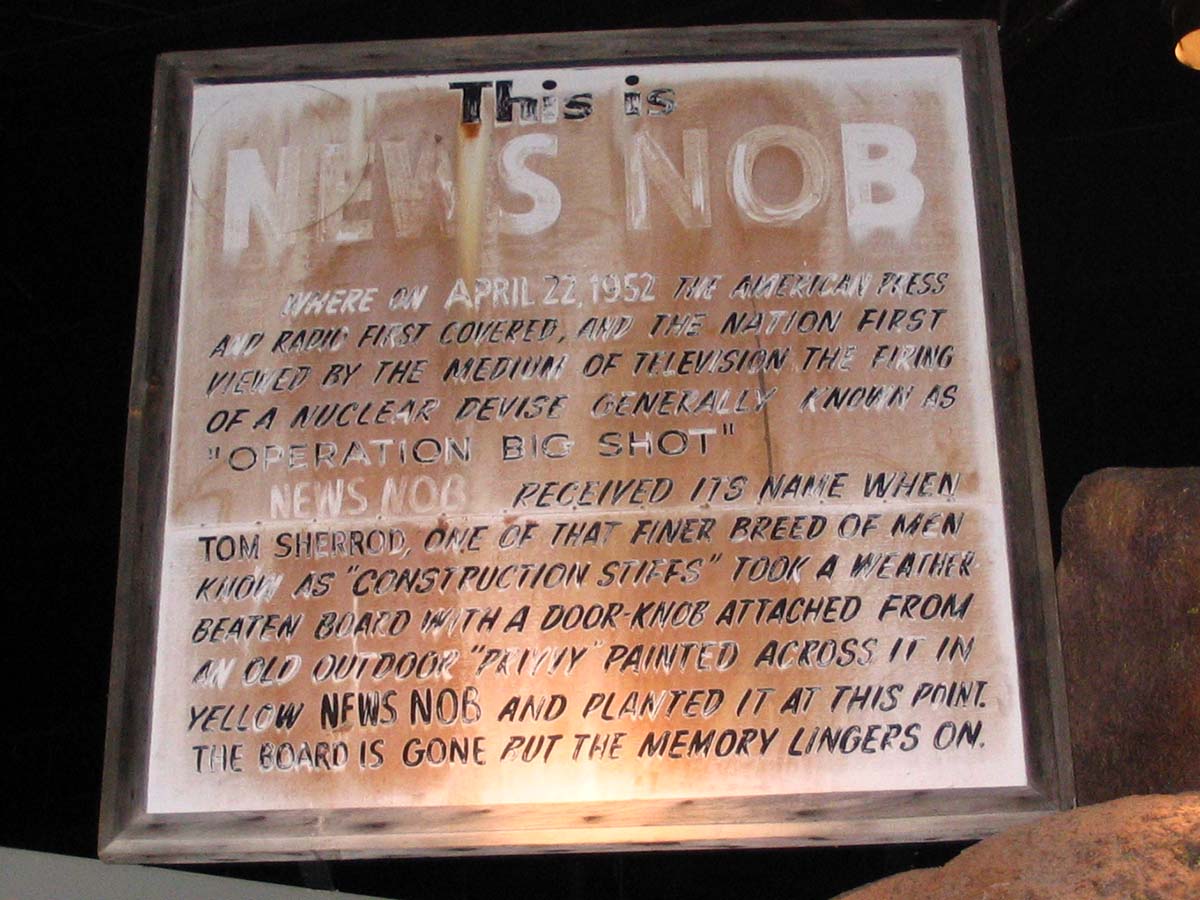
Outside the theater, a re-creation of the rock outcropping known as News Nob frames the end of atmospheric testing. With the signing of the 1963 Limited Test Ban Treaty, nuclear testing moved underground. We walked through a 10-foot diameter decoupler, a seismic effect absorber. Bill told me that this was one of the first things to be placed in the museum, since due to its size, everything had to be built around it.
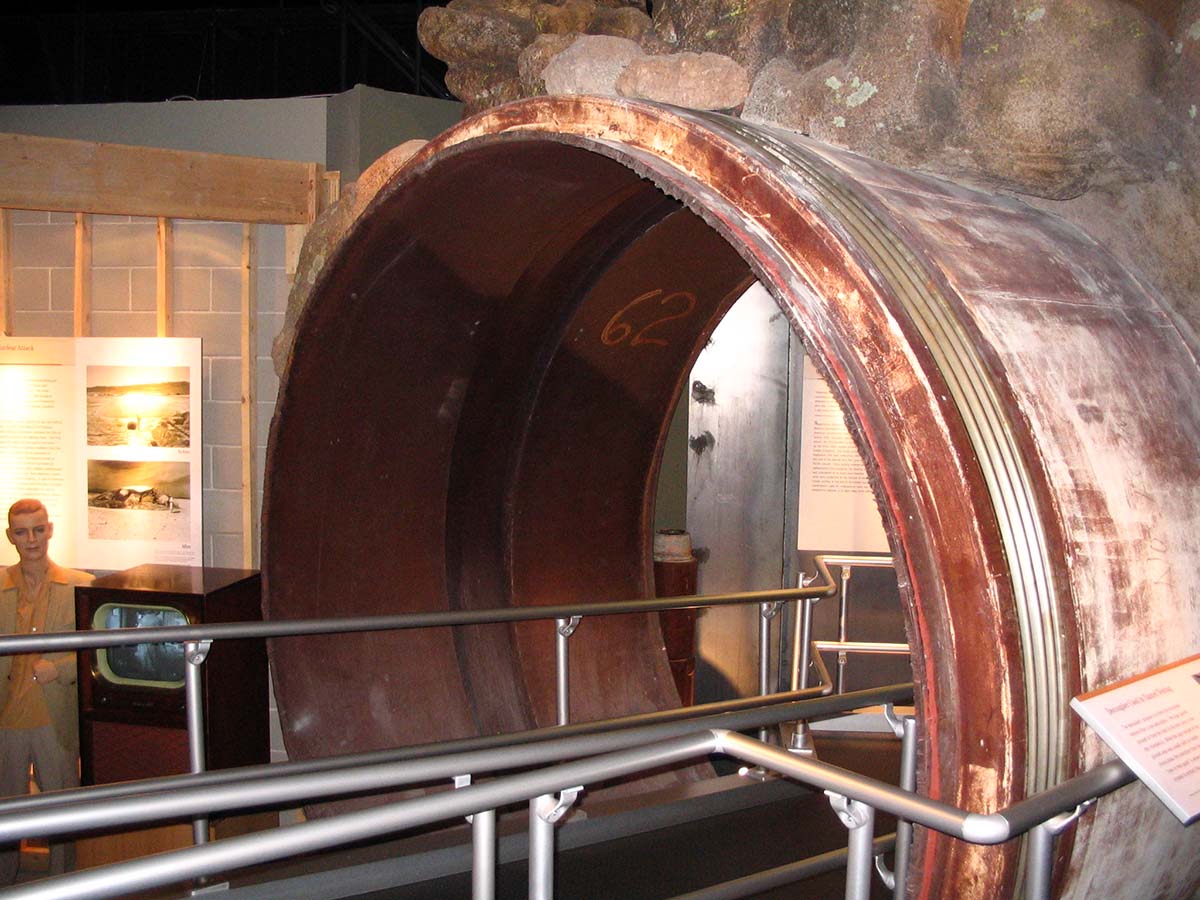
The museum's next Gallery focuses on Underground Testing. The Control Point replicates the environment of a test control room. An interactive phone allows guests to hear messages from different NTS workers while prepping and executing a detonation.
Bill pointed out one of the artifacts that he helped recover from the test site. The spring-loaded, 7-sided construct was used during the Fizeau test and was recovered from an underground, concrete bunker with 10-ft thick walls.
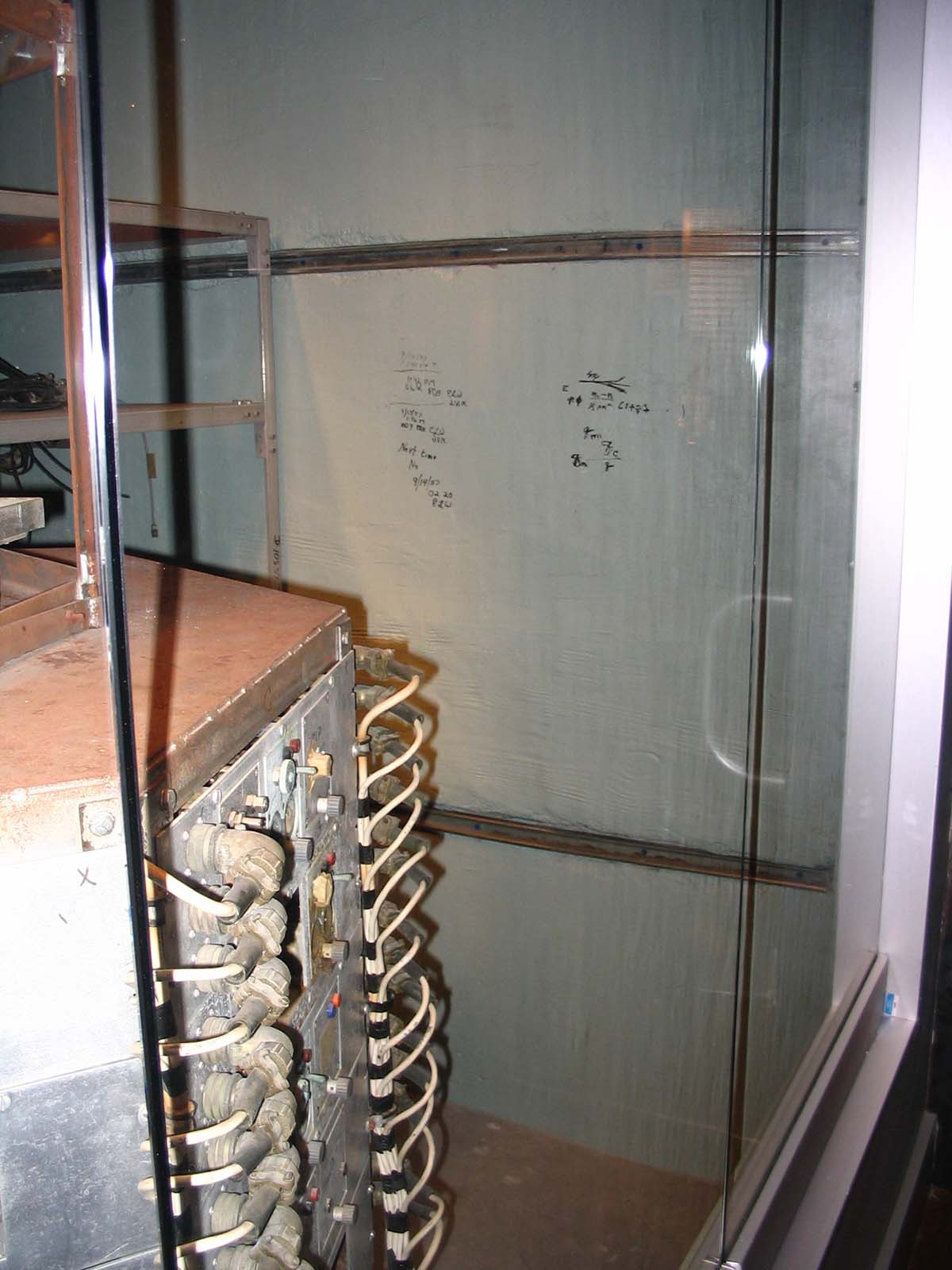
As we passed another timeline of events, Bill noted that they will have to update it to reflect the recent events in North Korea, a reminder that we still live in the nuclear age.
The remaining galleries focus on the other aspects of the NTS. The role of NTS in research conducted for hazardous material spills, nuclear accident preparations, and the use of nuclear rocket engines is told in the Versatile Laboratory Gallery.
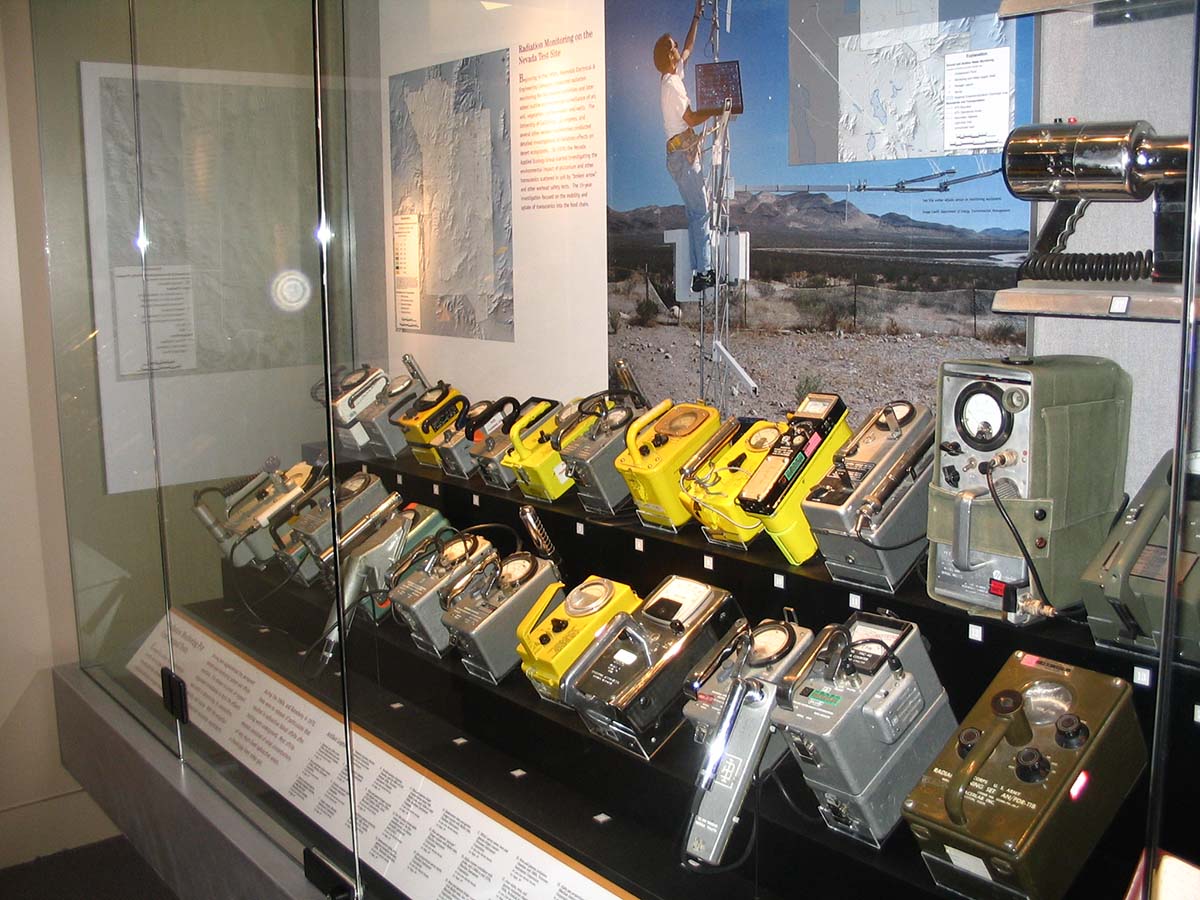
The legacy of the site is told in two parts. The first looks at the future of the land, exploring the radioactivity, the impact on the ground water, and efforts to monitor the surrounding environment. We stopped at exhibit to run a Geiger counter over some common items such as bottled water and a Fiestaware plate. I asked Bill about the issues of Yucca Mountain - the proposed high-level radioactive waste storage site - and how they dealt with it. He replied that Yucca Mountain is still an open issue, and as such the history has yet to be written.
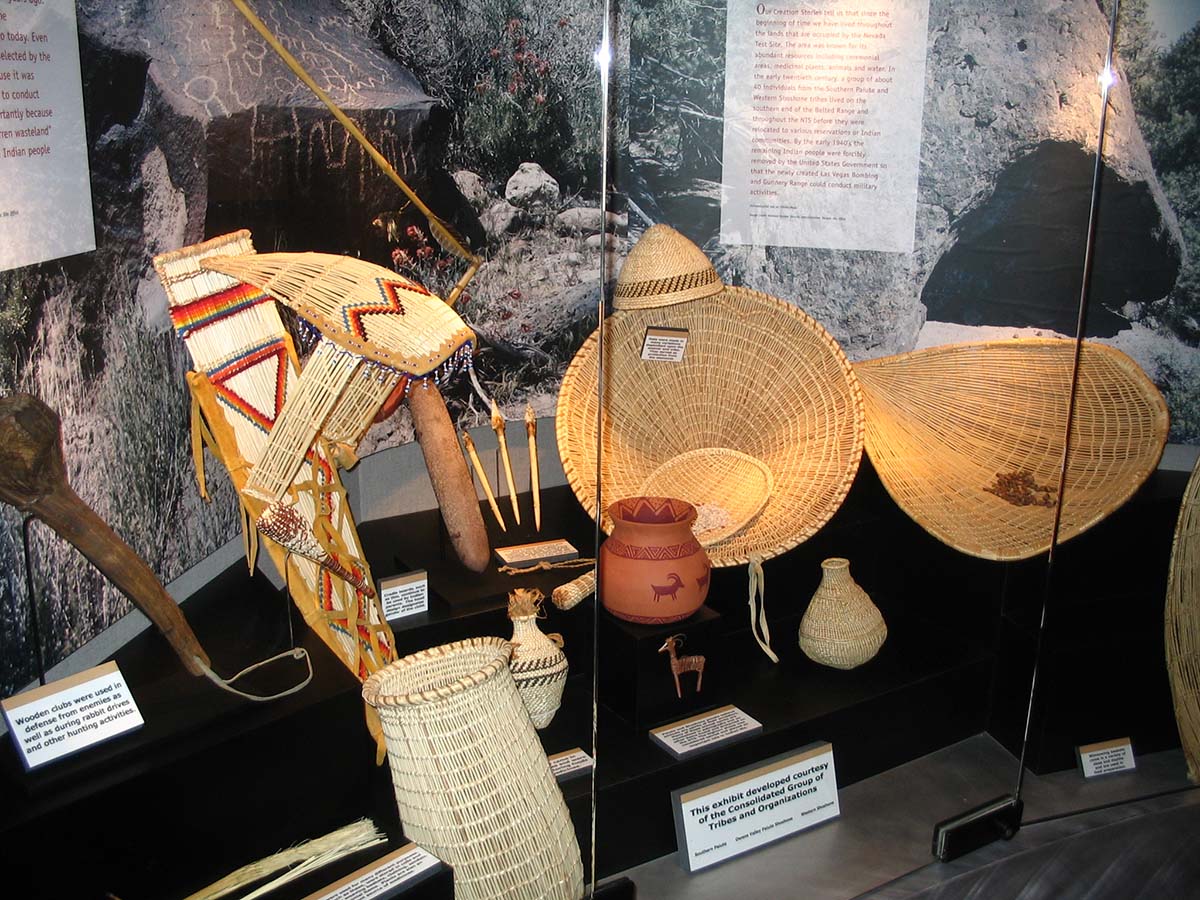
The second Stewards of the Land Gallery looks to the past, and tells of the early settlers to the region and the Native Americans. Bill mentioned that this collection is still under development with the local tribes.
In the Discovery and Innovation Gallery, exhibits highlight some of the technology first developed for use at the NTS. We stopped at an interactive kiosk, showcasing the use of high-speed photography. Other items of interest were seismic monitoring, drilling, and underground construction.
The museum ends in the Today and Tomorrow Gallery. Here issues about securing our current nuclear weapons, sub-critical testing, and other research conducted at the NTS is explored.
"The weapons aren't gone," Bill commented, "the world is just a different place." To illustrate this, the final exhibits are a chunk of the Berlin Wall, and a piece of steel from the World Trade Center.
After leaving, the museum we continued our conversation. He says the museum tries to put the 1,054 nuclear tests that the U.S. conducted in context. He added that he hopes that the museum can continue to expand the stories of all those impacted by the NTS.
The museum has an active educational program, but it is geared toward the local community. Hopefully, with additional funding, a broader outreach can be established.
Overall, the museum does a good job in keeping to a straight just-the-facts approach. I wish some issues were explored in a deeper fashion. Most notably, the plight of the "Downwinders", who lived in the fallout zones from the above-ground nuclear tests, would serve as a good example of a topic that is only lightly touched upon. But with that said, there is enough here that can serve as a starting point for anyone wanting to explore that topic into greater detail.
If you find yourself in Las Vegas, take a few hours and visit the museum, and if you can't spend some time on the museum's website for a virtual tour.
I would like to thank Bill Johnson and Maggie Smith for their wonderful hospitality.